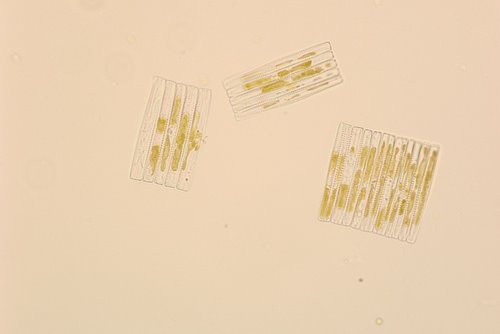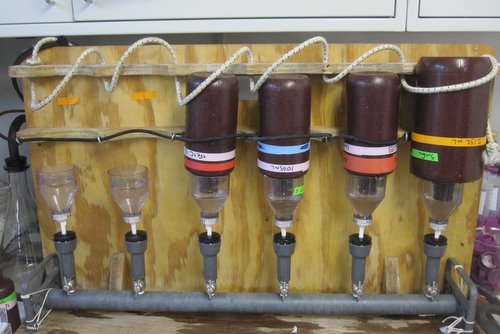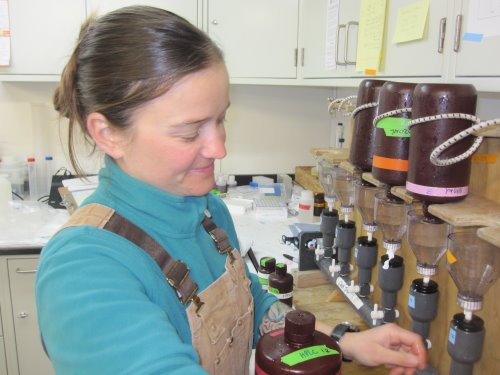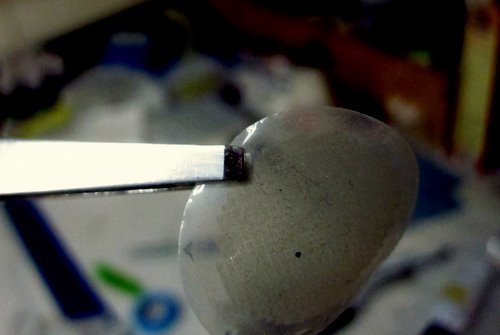Speed 4.9 knots
Course 141°
Location Larsen A (-64.7891,-60.2659383)
Depth 974 meters
We finished up the rest of our work this morning near the Dryglaski glacier and we’re on the move again. A couple days ago I discussed the CTDA research tool that is submerged in the water to measure conductivity (salinity), temperature, and depth. that we have on board. Maria Vernet’s group from Scripps Institute of Oceanography is using the water collected in the CTDA research tool that is submerged in the water to measure conductivity (salinity), temperature, and depth. to investigate the different amounts of phytoplankton found in the water.
PhytoplanktonSmall or microscopic aquatic plants that float or drift in fresh or salt water.
PlanktonPlankton are small or microscopic organisms that float or drift in fresh or salt water, especially at or near the surface, and serve as food for fish and other larger organisms. are small, microscopic organisms that live in water. PhytoplanktonSmall or microscopic aquatic plants that float or drift in fresh or salt water. are a particular type of plankton that generate their food using photosynthesis, much like plants on land. There are lots and lots of different varieties of phytoplankton and below you can see one particular type known as diatoms.

Filtration
In order to see how much phytoplankton is in the water, the phytoplankton needs to be concentrated. This is done by using a homemade filtration system that catches phytoplankton based on size. A bottle full of seawater is placed on top of each tube and the water slowly drains through. Different sizes of filters are placed in each one of the six tubes; the smallest catches anything bigger than 0.2 microns and the largest catches anything larger than 20 microns.

My roommate Katie works with this group and spends large periods of time filtering water. It usually takes her about 4 hours to process the water they collect from one CTDA research tool that is submerged in the water to measure conductivity (salinity), temperature, and depth..
[IMG_4349]
Once all of the water has finished draining, each of the filters is removed. They’re about an inch in diameter and in the picture below I’m holding the filter with a tweezers. Look carefully to see the grid pattern on the filters; the colored squares are the organisms still on the filter.

These filters are stored (after being carefully labeled) in glass vials in a -80°C freezer. This bursts the cells and releases the chlorophyll from being bound inside the cell membranes.

After they are frozen, the filters are soaked in acetone to remove the chlorophyll from the filter. Once the chlorophyll is dissolved in the acetone, they use a fluorometer to measure the concentration of chlorophyll found in each sample. When certain wavelengths of light hit chlorophyll, it fluoresces (emits light) and this device measures how much light is produced. If more light is produced, there is more chlorophyll in the sample. If there is more chlorophyll in the sample, there are more phytoplankton.


Comments